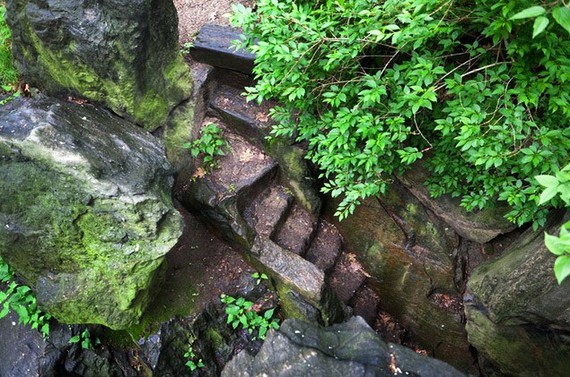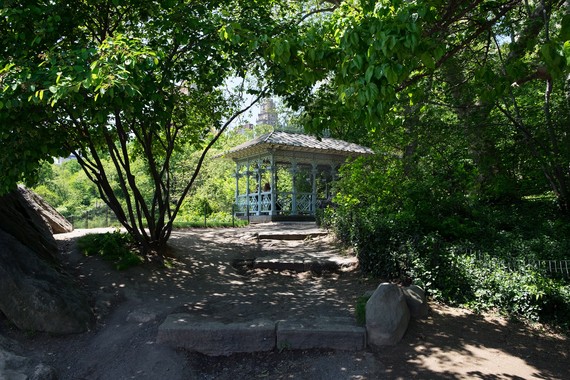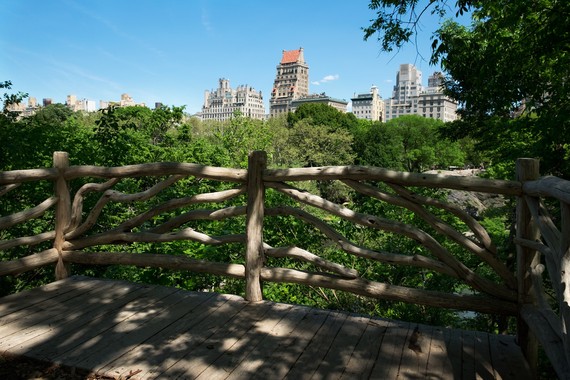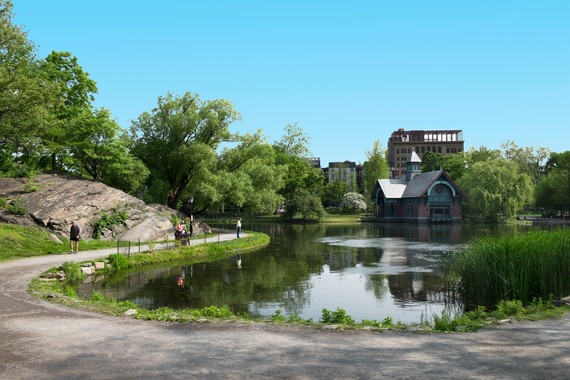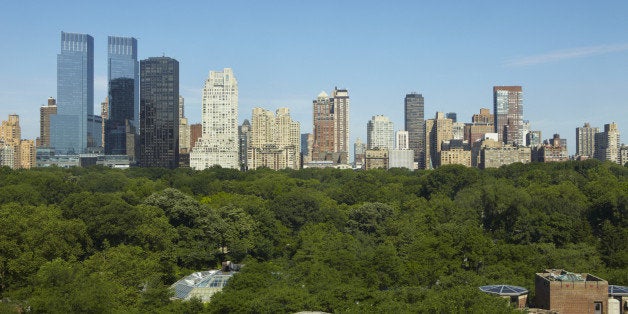
You could spend a whole week exploring Central Park's 843 acres of green lawns, cultivated gardens and man-made lochs - and you'd still miss out on the secret spots that we locals have come to love. Here, Chelsea Stuart reveals where to track them down.
The Ravine and Loch
Tucked away in Central Park's most sheltered corner - the 90-acre North Woods - are the Ravine and Loch, a forested canopy and stream so seemingly rural that you'd never guess they were only a short ride from Times Square. Walk along the Loch's cascading waterfalls, (fun fact: this is NYC drinking water) and let the natural white noise drown out the city. Central Park designers Frederick Law Olmsted and Calvert Vaux cleverly channeled the Adirondacks when laying out blueprints for the Ravine, using a thick forest of oak, hickory, maple, and ash to camouflage the city's skyline.
Where to find it: Mid-park at 103rd Street
Chess & Checkers House
The shaded octagonal brick structure near the Heckscher Playground and Ballfield and Wollman Rink is none other than Chess & Checkers House. After the park opened in the 1860s, it faced some major criticism for a supposed lack of children's activities (apparently providing a massive park in the middle of the concrete jungle wasn't enough). A century later, in 1952, the park opened a visitors center where guests could sit on a wraparound porch and play chess, checkers, backgammon and dominoes on mosaic-tiled tables. If you or your little ones don't have the patience for bishops and knights (right there with you), modern additions on lend include soccer balls, frisbees, wiffle balls and bats.
Where to find it: Mid-park at 64th Street
Ramble Cave
The artificial 36-acre Ramble was one of Central Park's first undertakings. Right in the middle of the park, the remote (well, as remote as you can get in Manhattan), wooded area is known for its winding paths and bird population (230+ species can be seen throughout the year). But a lesser-known spot in the wild garden is Ramble Cave. During the 20th century, the covert cave became a criminal hotspot, and park management decided to close it off from the public. Though you can't access it today, the descending stone steps are still visible if you know where to look.
Where to find it: The Ramble can be found mid-park from 73rd to 79th Streets, the cave is on the west shore of the Ramble, north of Gill Bridge and south of the Oak Bridge.
RELATED: 67 Things to Do for Free in New York
Ladies Pavilion
Back in 1871, the ornate Victorian-style Ladies Pavilion served as a shelter for trolley passengers waiting to catch a ride at Central Park West and 59th. In its second life, it was relocated to a secluded section of the Lake. Otherwise known as Ladies Pond, it was home to a women's-only ice skating rink (no boys allowed!). When the 1920s rolled in, "progressive" women began inviting their beaus to skate with them and scandalously hold hands in public. The park management wasn't pleased and shut the place down. Today, only the gray slate roof and elaborate cast iron design of the Pavilion remains.
Where to find it: West side between 75th and 76th Streets
Hallet Nature Sanctuary
We've already pointed out the Ramble and North Woods, but let's not forget the Hallet Nature Sanctuary, which rounds out Central Park's three-piece woodland collection. Despite its location, just steps from 59th and 5th avenue, in one of the park's busiest areas, the sanctuary has remained largely untouched. Previously inaccessible to the public and ignored even by the groundskeepers, it wasn't until the Central Park Conservancy took an interest in restoring the area that it caught the public's eye. Thanks to the Woodlands Initiative - a cool $40 million to be invested in Hallet, the Ramble and the North Woods - Hallet opened with regular visiting hours just this past April. Check out its brand new pathways, rustic timber-carved gate, and the sweet little sanctuary-within-the-sanctuary.
Where to find it: East Side from 60th-62nd Streets just south of Wollman Rink
Harlem Meer
Way up at the tippity-top of Central Park is the 11-acre Harlem Meer, a nod to the neighborhood's 17th-century Dutch settlers. The oak, bald cypress and ginkgo trees hugging the small man-made lake's edge are worth the short subway ride. Families come out in droves for catch-and-release fishing and annual celebrations like the Halloween Parade and Pumpkin Flotilla and the winter Holiday Lighting held at the nearby Charles A. Dana Discovery Center.
Where to find it: East Side from 106th to 110th Street
RELATED: Your Hot Summer in NYC
Read the rest of Hidden Gems of Central Park on Jetsetter
All photos by April Ellis
More from Jetsetter:


